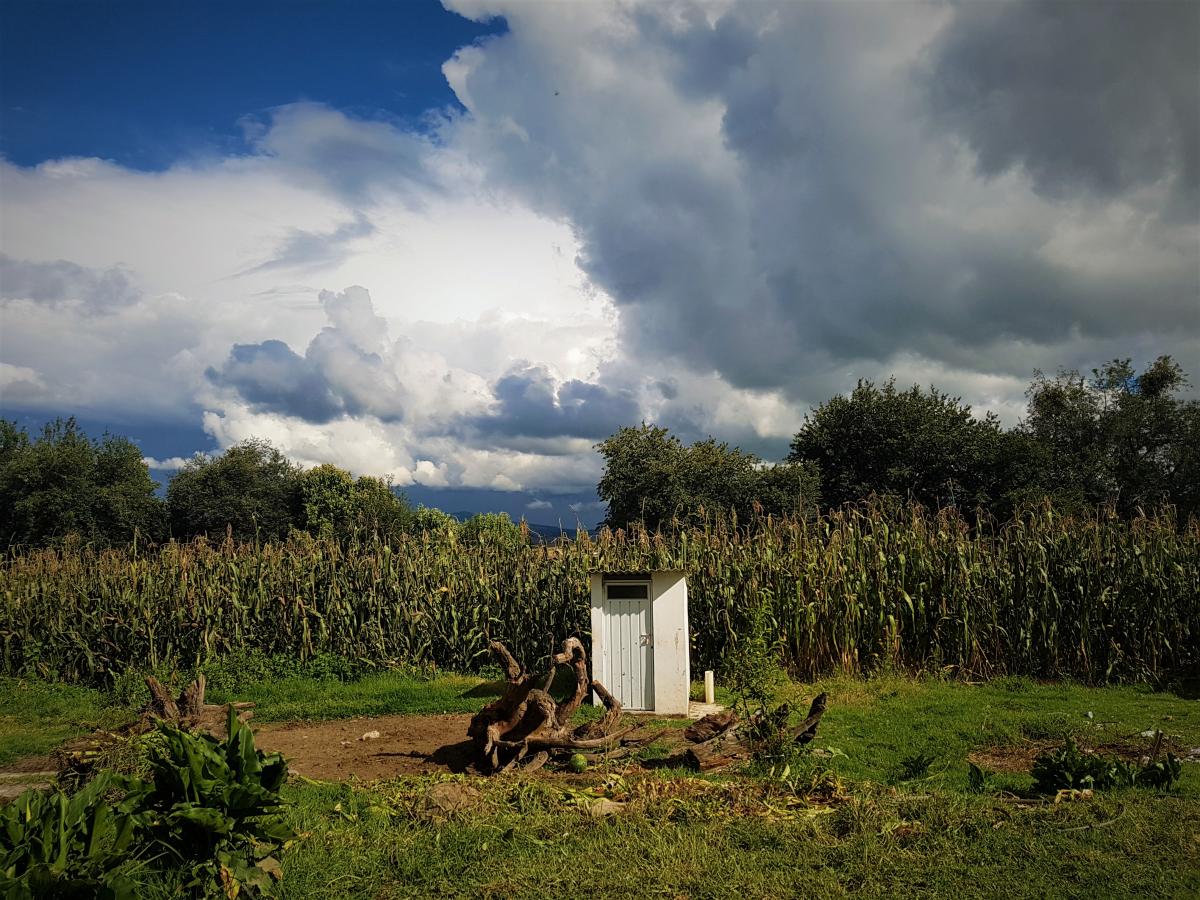
Mexico is a mega diverse country home to 12 percent of the global biodiversity and also the center of origin and genetic diversity for crops that are feeding the growing worldwide population, such as maize, beans and peppers. Mexico s biodiversity includes various ecosystems that are represented in its national territory, and its indigenous communities are also very important to its cultural and historical diversity. The last census showed that 68 different communities live in Mexico, and and each one of them speaks a different native language.
In addition to its biodiversity, Mexico is geographically placed in the Mesoamerican area, once inhabited by such old and advanced civilizations as the Aztecs, Olmecs and Mayans. These ancient civilizations were based on agriculture, and for this reason the area came to be one of the cradles of plant domestication.
Since then, agriculture and the Mexican diet came to be very interrelated. Maize, pumpkin, pepper and tomato were the first Mexican foods, which people of old got from a traditional agricultural system called milpa. The word comes from the n huatl, an indigenous language, and means what is sown on top of the plot. This agricultural system is essentially configured around polyculture, where main crops and some herbs are grown together and farmers try to use all the products to feed their families and animals.
One of the main advantages of the milpa is that it is a system where the different species coexist, sharing resources like water, light, soil and even ecological interactions, such as the nitrogen fixation provided by the beans. This traditional agricultural system continues to play an important economic and cultural role in our modern times, as noted in a report from CONABIO (National Commission for the Knowledge and Use of the Biodiversity):
The milpas are a reflection of the knowledge, technology and agricultural practices necessary to obtain from the land and human labor the products necessary to satisfy the basic needs of the peasant family. Because the milpas represent an important part of Mexican cuisine and continue to be the basis of food sovereignty in many regions of Mexico.
The importance of the milpa is undeniable, and it has played a central role in the protection of Mexican biodiversity. Currently, farmers across the country are growing around 60 native varieties of maize, five native varieties of beans, four native varieties of pumpkins and an amazing variety of peppers. All of this diversity is the product of the daily work of farmers who every year choose seeds, which they breed according to their needs and interests.
As Mexicans, we are proud of this legacy. As Diego Prieto, general director of the INAH (National Institute of Anthropology and History), said in a 2016 interview, the Mexican milpa has had global implications and the effects are seen even in modern times in the way that people eat today around the world. As he noted:
This form of cultivation constitutes one of Mexico’s largest biocultural contributions to the world; species such as tomato, often used in Italian cuisine, or cacao, the raw material of Belgian or French chocolate, emerged from the Mexican milpa.
But we are concerned, in Mexico of the 21st century, about the future of the milpa and especially its main crop, maize (corn). Despite changes in the diets of Mexicans, maize in the form of tortillas, atole and tamales, among other preparations still plays a central role in daily nutrition.
According a report presented by SAGARPA (Secretary of Agriculture, Livestock, Rural Development, Fisheries and Food), Mexico s average annual production of maize is 23.5 million tons on 7.5 million hectares. It mainly grows two varieties, white and yellow. The white maize is used for human consumption while the yellow maize is used for industrial purposes and animal feed.
Mexico is the sixth largest producer of maize in the world, but it is also a major consumer of this crop. Even though domestic production traditionally met the entire demand for white maize, the country currently has to import more than 5 million tons of white maize and 8.15 million tons of yellow maize, representing a 45 percent deficit.
In recent years, due to drought and other problems likely caused by climate change in Northern Mexico, the nation s most important region for maize production, the country s production of yellow maize dropped. Now Mexico is one of the largest importers of maize worldwide, buying 8.15 million tons abroad in 2012, 7 million in 2013, more than 10 million tons in 2014 and 8.15 in 2015.
Meanwhile, the population in Mexico has increased in recent decades as the numbers of farmers have simultaneously decreased. According the INEGI (National Institute of Statistics, Geography and Informatics), the current population in Mexico is 113 million and just 9 percent are farmers (INEGI 2010).
As the world faces an increasing demand of maize for food and bio-energy, it should be a primary necessity to develop a strategy that addresses the potential decrease in global maize availability as well as associated price increases.
Some people in Mexico are against the solutions that already exist to address these problems because they think those scientific approaches are dangerous to the diversity of traditional Mexican maize varieties. But the real danger is climate change and misinformation. If we are allowed to use science, the Mexican legacy of milpa will continue feeding the world.
